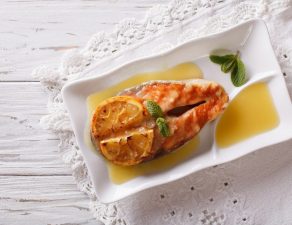
Three new consumer guide released by marine conservation groups assign ratings on the relative environmental friendliness of different types of sushi groups’ lists The three don’t exactly match each other, but here are some best, OK, and worst choices, according to the Environmental Defence Fund.
Western-style Sushi
The increasing popularity of sushi around the world has resulted in variations typically found in the Western world, but rarely in Japan. Such creations to suit the Western palate were initially fueled by the invention of the California roll (a norimaki with crab (later, imitation crab), cucumber, and avocado).
A wide variety of popular rolls (norimaki and uramaki) has evolved since. Norway roll is another variant of uramakizushi filled with tamago (omelette), imitation crab and cucumber, rolled with shiso leaf and nori, topped with slices of Norwegian salmon, garnished with lemon and mayonnaise.
American-style Makizushi
Futomaki is a more popular variation of sushi within the United States, and comes in variations that take their names from their place of origin. Other rolls may include pretty much anything, including chopped scallops, spicy tuna, beef or chicken teriyaki roll, okra, and assorted vegetables such as cucumber and avocado, and the “tempura roll”, where shrimp tempura is inside the roll or the entire roll is battered and fried tempura-style.
In the Southern United States, many sushi restaurants prepare rolls using crawfish. Sometimes, rolls are made with brown rice or black rice, which appear in Japanese cuisine as well.
Uramaki Sushi
Uramaki is a medium-sized cylindrical piece with two or more fillings, and was innovated as a result of the creation of the California roll, as a method originally meant to hide the nori. Uramaki differs from other makimono because the rice is on the outside and the nori inside. The filling is in the center surrounded by nori, then a layer of rice, and optionally an outer coating of some other ingredients such as roe or toasted sesame seeds. It can be made with different fillings, such as tuna, crab meat, avocado, mayonnaise, cucumber or carrots.
Examples of variations include the rainbow roll (an inside-out topped with thinly sliced maguro, hamachi, ebi, sake and avocado) and the caterpillar roll (an inside-out topped with thinly sliced avocado).







